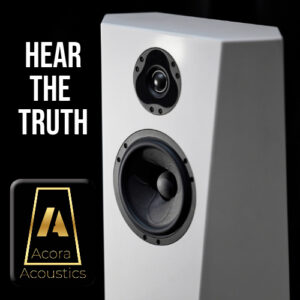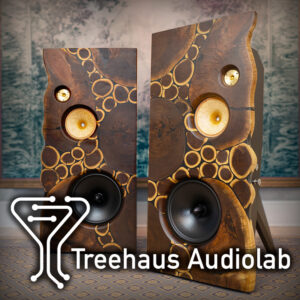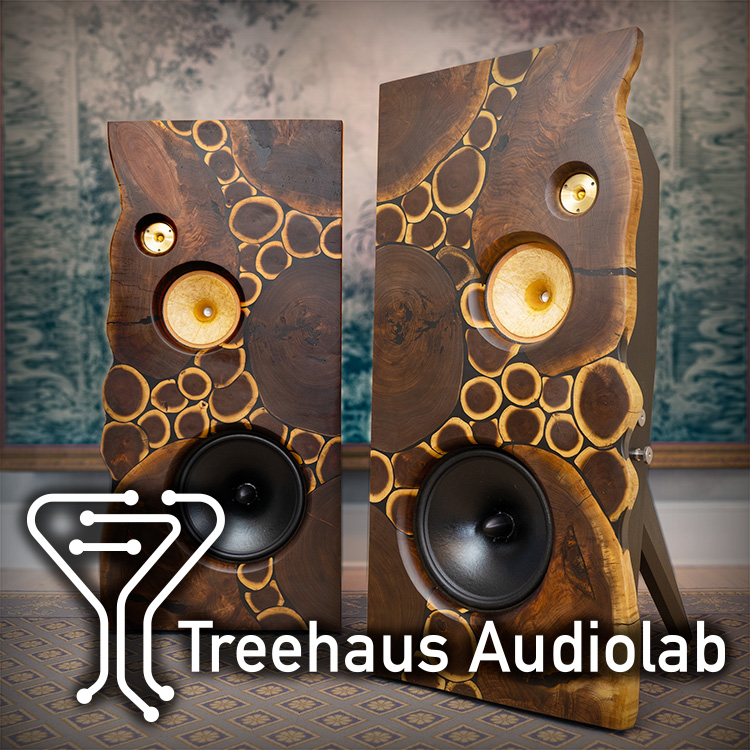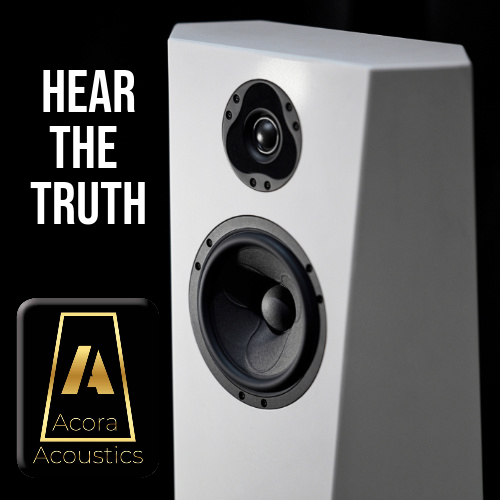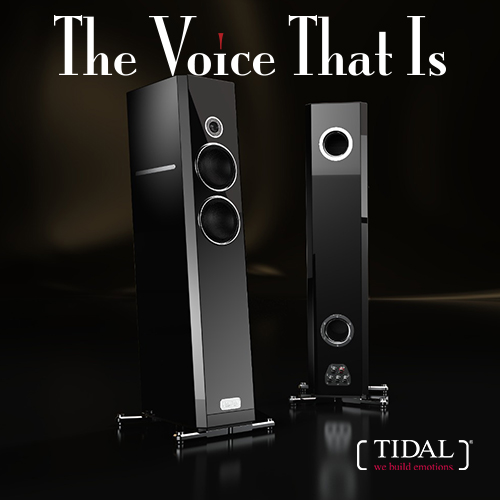The Soulnote A-3 comes from a high-end Japanese audio electronics brand. It was founded in 2004 by former Marantz director, Norinaga Nakazawa. Soulnote reentered western markets in 2022 with a bang, offering electronics boasting exceptional build across a wide range of price tiers. Their entry level gear is unusually high-end and well-constructed at price tiers commonly devoid of anything we would consider luxury, and their higher-end offerings are built-to-play in the realm of top dogs throughout the western market, with touches of flair that sets them apart not only from their western counterparts, but also from their Japanese market peers.
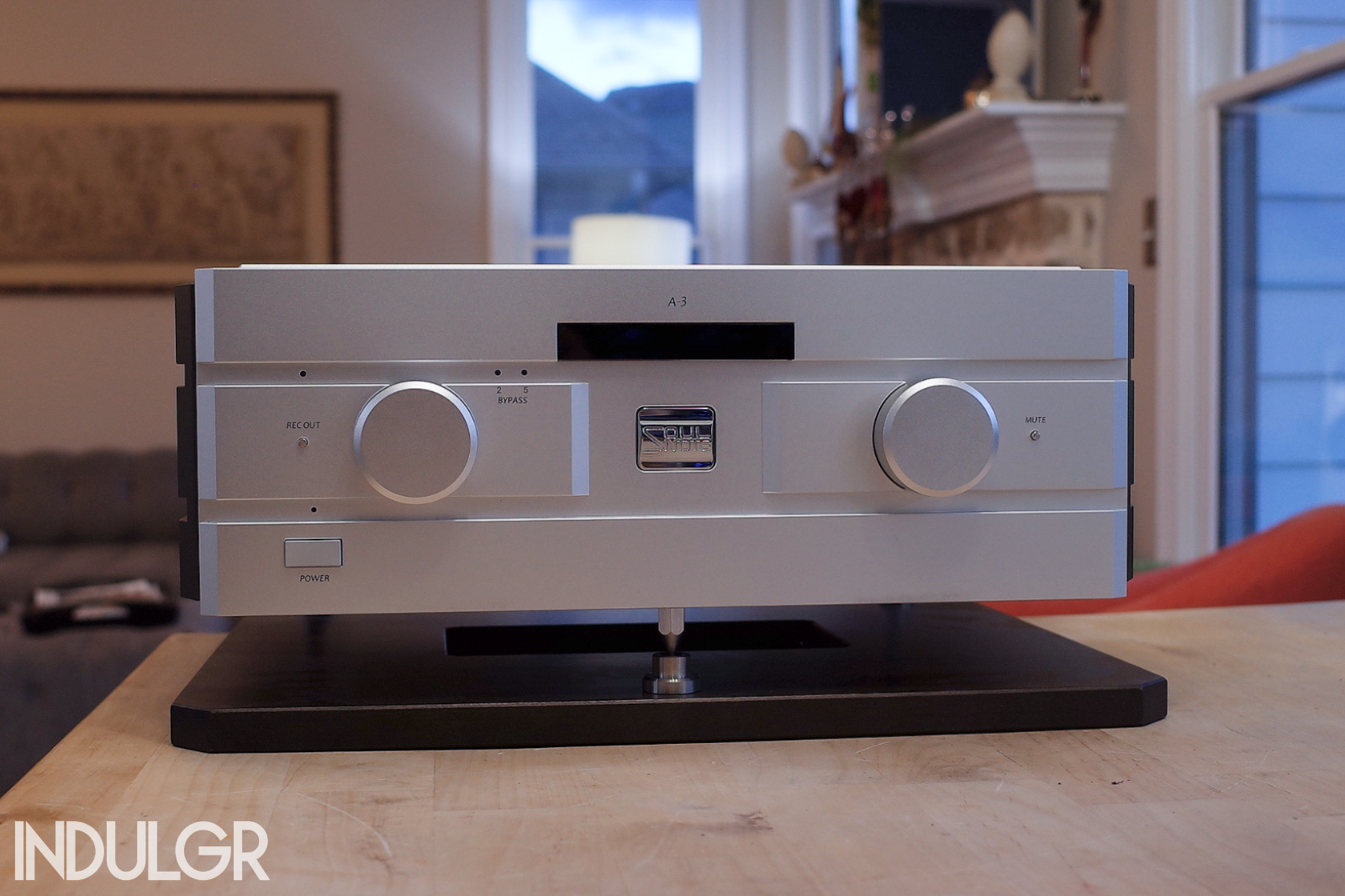
Ego vita!
Call me Jameson — owner and founder of INDULGR magazine. While we all explore the world of high-end here at INDULGR magazine, I specialize in the upper most echelon of these pursuits, the “ultra-high-end.” When it comes to these audiophile toys, I’m only interested in the absolute best sound available. I’ve spent time as both dealer and customer — and as a result — thousands of hours testing equipment. It doesn’t take long for me to know if something is excellent or not, and frankly, I don’t have time for gear that isn’t exceptionally performant at any price.
Words and Photos by Jameson Mourafetis
Value isn’t really something I’m overly concerned with unless something doesn’t live up to its price tag or represents an extreme value in the world of luxury endgame gear — it must compete with the absolute best. At our top secret INDULGR HQ, the process of building out a large flagship listening space, dedicated to evaluating the pinnacle of audio performance is under way, and in a way that other publications haven’t had the space or funds to do properly. Stay tuned for more on that front, but for now, let’s dive into the Soulnote A-3 integrated amplifier.
Introduction: Soulnote A-3 Integrated Amplifier
I will always have a love hate relationship with integrated amplifiers. They’re almost always compromised sonically compared to their separate component counterparts, even though conceptually, they don’t have to be. The space savings and visual cleanliness of such for secondary or office system use is obviously appealing. My hunt for the ultimate “Super Integrated” continues, and my radar detected the new A-3 as soon as I received early news that Soulnote would be releasing a flagship 3 Series integrated. I’ve spent a few months with the Soulnote A-3, and it’s clear that it preserves all the build quality and sound, found throughout the rest of their flagship 3 Series components without giving up any of that wonderful Soulnote ‘voodoo magic’ through integrated consolidation. The A3 combines elements of Soulnote’s flagship P-3 preamplifier and M-3 monoblock amplifiers into a more compact single-chassis design, and brings forth sonic attributes not normally found in compromised integrated amplifiers. In terms of the brands offerings, which is to say relatively low power for solid state — but still relatively high power in the world of Japanese amplifiers — the A3 seemingly makes no compromises within their own world of “Japanese Super Integrateds.”
Aesthetics and Architecture
The Soulnote A-3, as well as the rest of the 3 Series lineup, manages to tastefully execute a bold-minimalist design in the world of high-end audio. The design language manages to break free of the monotony one might expect from the Japanese audio world while bringing some much-needed restraint to international markets. Soulnote certainly isn’t just regurgitating what everyone else has done in high-end audio since the beginning of time. Instead, their design fits perfectly into a modern high-end home. It can stand alone as the centerpiece of a serious listening system or integrate tastefully with most architectural styles. Regardless of how you display the amplifier, it’s beautifully finished inside and out, and every surface screams quality manufacturing. On first touch, however, it may be easy to mistake some of the design quirks — such as the teetering top-plate — for quality issues or oversights, but I assure you, everything about every Soulnote product is intentional, and done purely for the pursuit of better sound.
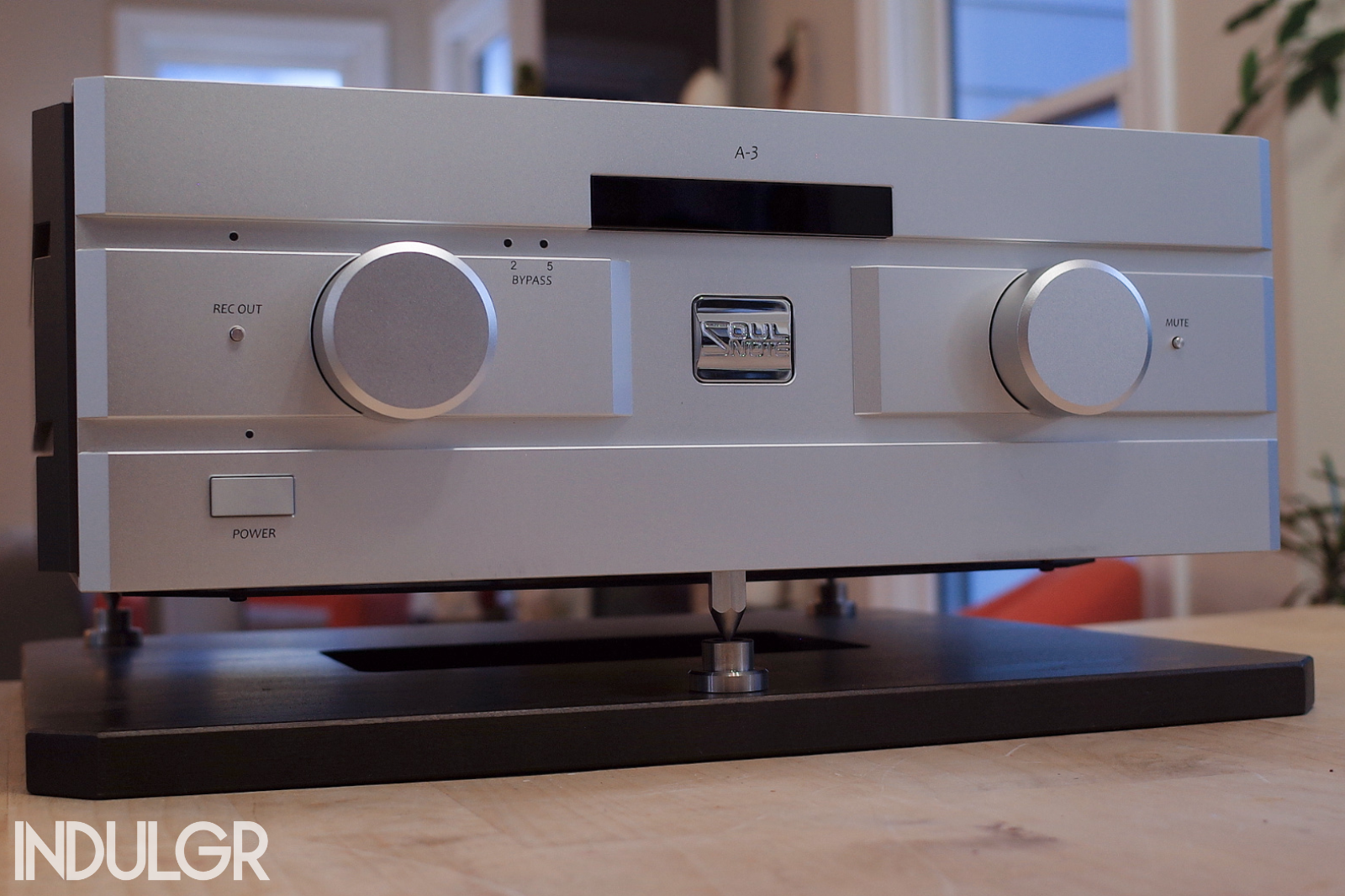
Unconventional Design | Kato-san’s Philosophy
To get a better sense of the intention behind Soulnote, you have to understand the designer, Hideki Kato. Kato-san’s design philosophy is centered around improving dynamic performance rather than focusing on the static measurement parameters many designers these days are obsessed with. Music is far more complex than just constant-amplitude sine waves or pink noise. The way Kato-san sees it, measurement-focused designs overlook dynamic performance, the performance actually re-producing music. He advocates for something we at INDULGR insist on: trust your ears. According to Kato-san, measurement-driven design approaches often yield very technically good but boring, lifeless results. The concept of true dynamic-focused, listening-driven design has been eschewed for many years in western markets with static design focus still dominating many audiophile circles. Kato-san doesn’t throw away measurements just for the heck of it—measurements are taken as far as necessary with all decisions made in pursuit of audio nirvana for music reproduction, not a perfect sine wave. While he ventures into territory most here in the west would consider voodoo, the results are undeniable. Kato-san knows what he’s doing.
The ‘voodoo’ in Kato-san’s approach extends beyond just circuit design, and this is made immediately apparent the moment you interact with the A-3. As mentioned above, the top plate teeters when pressed at the corners. The binding posts and power receptacle are floating and left unmounted. The amplifier rests on 3 spikes that dig into an included spike-receiving wood platform. As an aside, when packing the amplifier for my review, the Soulnote team giggled profusely when explaining that you do, in fact, spike directly into the gorgeously finished wood platform. More quirks are found inside the amplifier where PCBs are also left unmounted. Despite the intentional lack of rigidity of the chassis, you’ll find hardly any damping material anywhere on the amplifier. Every quirk was implemented with thorough listening tests, again, purely in the pursuit of music reproduction. Everything is tested by ear, and if Kato-san says it makes a difference, you can be damn well sure it did in his listening tests. The cumulative result is something very special, and just calling it Japanese quirkiness would be hugely reductive.
To read more about Kato-san’s design philosophy, I highly encourage you to read his series of blog posts, translated to English here.
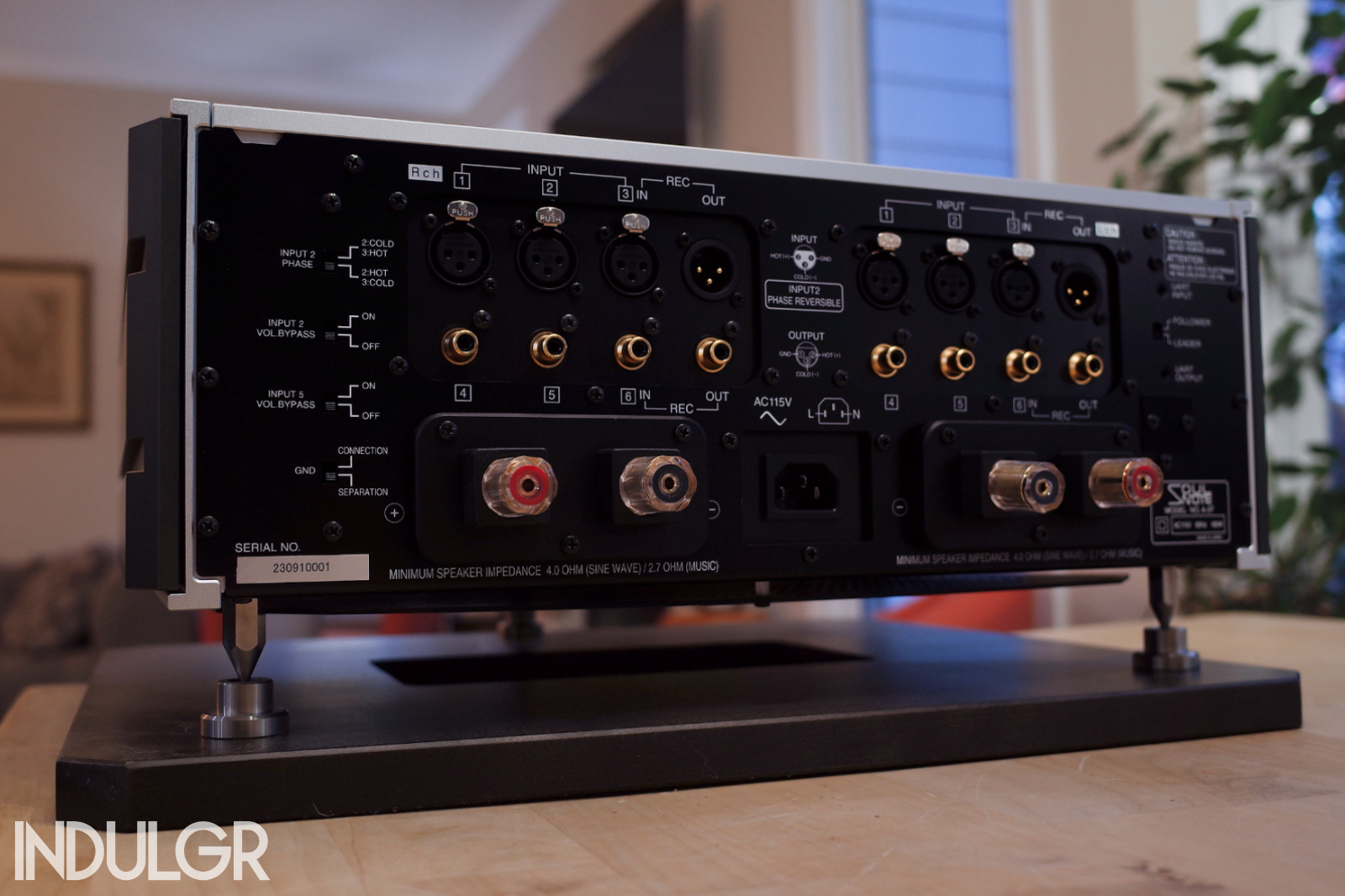
Sonic Impressions
The quirks don’t end at the unusual design choices. The sound signature of the A-3 is far from what western markets are used to — it’s not the conventional sterile, boring, clinical, rigid, “correct” overly pleasant sound we’ve come to expect from too many high-end amplifiers from Switzerland, Germany, or the United States, but it’s also not the overly syrupy signature nor the bright, bass-absent signature you often find in the two main camps of high end Japanese electronics. The sound is forward and present, projecting the stage into your room with lifelike aplomb while retaining a subtle warmth to the overall presentation. There’s a sense of speed and transient snappiness, without giving up fluidity or microdynamic expression, that just isn’t typical to such stylized signatures.
The sound of the A-3 is rich and full-bodied across the audio spectrum, not just low-end-focused. While the bass output has great depth and speed, it doesn’t steal the show. It’s presented as one component of the coherent stage without leaving the rest of the spectrum an afterthought. Despite my usual preference for bombastic low-end, the A-3 provides such a pleasant signature that it truly didn’t leave me wanting. The midrange is stylized in a pleasantly musical and emotionally engaging way with vocals placed palpably in front of you. The stage isn’t exaggerated outwardly or shrunken — it’s there in the room with you at lifelike size with well-defined image edges. The top end is extended and crystalline but still smooth—not smoothed over or rolled off or sluggish the way you find in designs that pursue “tube-iness.” Ambient and other low level details are rendered transparently but not distractingly or exaggerated artificially.
Holistically, this amplifier oozes emotional engagement.
Standout Pairing: YG Acoustics Carmel 3
With the help of the excellent YG Acoustics Carmel 3 loudspeakers, the conclusion I keep arriving at is that not only is the A-3 wonderfully stylized, it also achieves what many high-end integrated amplifiers fail to do at any price: exhibit levels of sonic refinement that almost always require a discrete preamplifier to achieve. Did the Carmel-A-3 combination give me the most oomph in the lowest octave or gigantic macrodynamics? No, but again, while I usually would be disappointed by the lack of foundational low-end focus, the pairing managed to provide such a such a level of emotional engagement with the music that nothing felt lacking or out of balance, and the Carmel’s transparency allowed me to dig in and know exactly what the amplifier provided: the refinement of separates. With a more efficient speaker like many of those popular in the Japanese market, the A-3 may deliver more low-end, sure, but the more even presentation of the pairing, as-is, manages to impress. I don’t want to give away too much as far as my now-released YG Acoustics Carmel 3 review, but suffice it to say, the Carmel 3’s transparency allowed me to dig in and reveal exactly what the A-3 provided in terms of refinement.

The A-3, and Soulnote, in the world of High End Audio
So where does the A-3, and more broadly, Soulnote, fit in with the world of high-end audio? These products are musically and emotionally involving first in a way you won’t find here in the west while remaining uniquely stylized even in the world of quirky Japanese electronics. With their pleasantly stylized signature, they’ll find absolutely no trouble finding customers. I rarely find gear I’m excited enough to want to bring home for review, and it’s even more rare that I find gear I want to keep, but Soulnote has managed to more than pique my curiosity, and I’ll absolutely need to hear the rest of the 3-Series lineup as soon as I can.
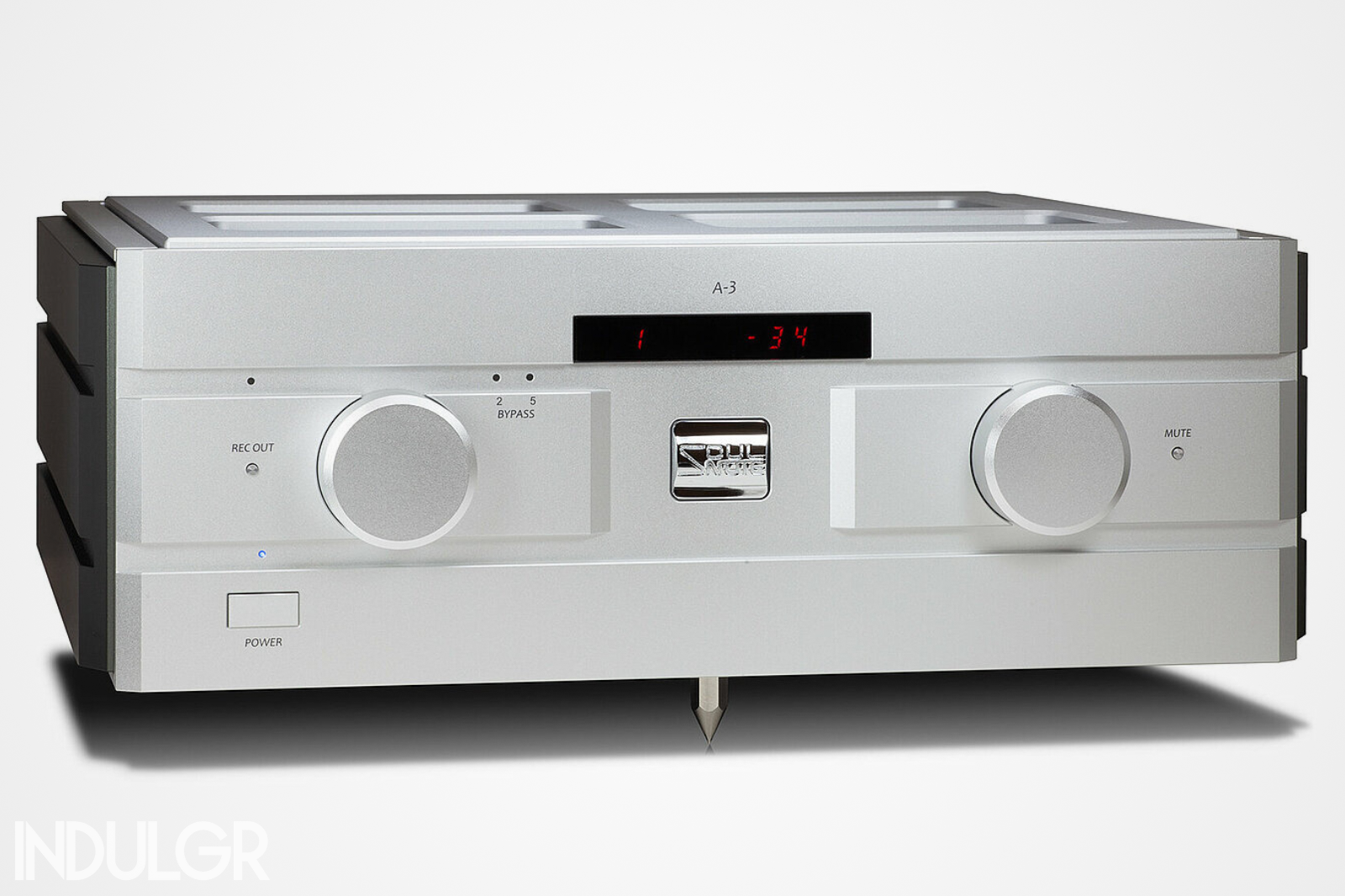
Conclusion
What Soulnote has accomplished with this product is far from trivial. It’s hard to overstate how few so-called “super integrateds” really achieve the refinement of separates, but in my search for the ultimate integrated, the A-3 is one of the few. Without a doubt, you need to hear it with your own ears to understand it, but once you do, it’s made clear that Soulnote is worthy of the recent attention and praise it’s been receiving here in the west.
I think my thoughts here have been pretty clear don’t you? I’m with Kato-san when I say: go listen to the damn thing. Don’t let standard measurements dictate what you enjoy. Trust your ears. I have no doubt that the Soulnote A-3 will speak to most of you, as it has for me.
Specs & Features
https://www.soulnote.audio/soulnote-en/series-3/a-3
About the author and INDULGR
As he alluded to above, Jameson, the owner and publisher here at INDULGR, is the resident high-end snob. He’s very up-front about his disdain for anything but the best. He has no time for gear with endgame prices without matching endgame performances, and anything less than a brand’s flagship series shouldn’t even be mentioned in his presence. And yes, unlike reviewers at other magazines, he can afford, and will purchase, the absolute best gear irrespective of cost. His goal is to find the summit in the world of audio and to share it with the rest of the luxury world that doesn’t know they need it yet. To that end, he’s in the process of building the flagship INDULGR listening room that will make clear INDULGR’s level of seriousness in the world of high-end audio as well as other luxury segments we cover.
This is where the absolute best gear in the world will be tested. It’s rarified air to have a space suitable for such gear, and even rarer for a magazine to have the expertise to execute it to this level. Flagship gear will be heard in a way never before listened to by review magazines. The big fish in the small pond of audio shouldn’t be worried though, INDULGR is playing in a much larger arena, and we intend to test gear their rooms wouldn’t properly handle anyway. This is for the client looking for the absolute best without thinking twice about it. They won’t notice the money is missing. IE these are not the 90 year old audiophiles you’re writing to, so don’t sweat it. We’ll take it from here.


